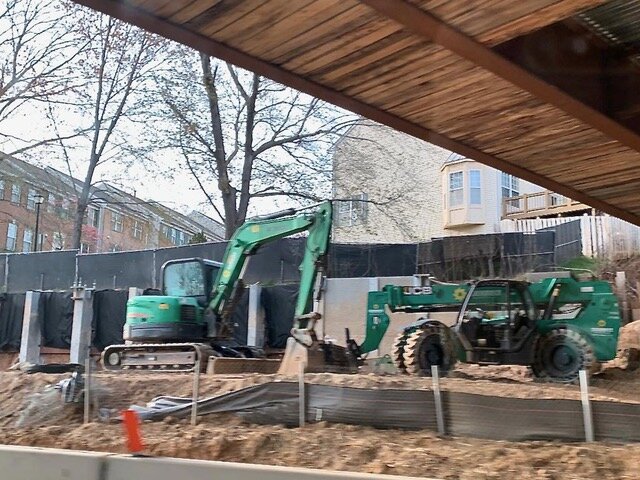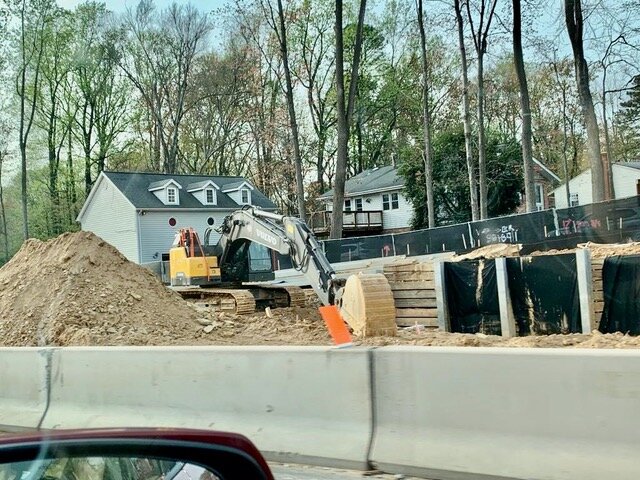The 2021 Maryland General Assembly
January 13 - April 12, 2021 marked the 442nd session of the General Assembly. During this session, 2,347 bills were introduced (967 in the Senate and 1,380 in the House) and 817 were passed.
The year was remarkable because of the logistical challenges the coronavirus pandemic presented to lawmakers. Normally, the public would have free access and face-to-face contact with legislators. During this session, essentially all communication was digital and remote and subcommittees and hearings were streamlined. When voting sessions of the Senate and House were held in the two chambers, as required by the Constitution to enact legislation, members were stationed in plexiglass booths.
.For information on the Maryland General Assembly legislative process, refer to our January 31, 2021 newsletter.
General Conclusion
For the past three sessions of the Maryland General Assembly, the Maryland Senate, and more specifically the Senate Budget and Taxation Committee, have failed to give a favorable report or approve any bill that would place additional scrutiny, oversight, or accountability on the proposed I-495/I-270 toll-lane public-private-partnership (P3) or any future P3. This includes the bills described below, as well as the “County Consent” bills introduced in 2019 and 2020 (SB 229 and HB 292), with 70 sponsors and co-sponsors, which would have prohibited the State from constructing “any toll road, highway or bridge without the express consent of a majority of the governments of the affected counties.”
On the House side, Delegate Kumar Barve’s Environment and Transportation (ENT) Committee has a pivotal role in the consideration of P3 bills. During last year’s short session, which adjourned early because of the pandemic, the ENT Committee gave its approval to the P3 bills sponsored by Delegates Korman and Solomon too late for full consideration in the Senate. This year, the ENT Committee gave the Korman and Solomon bills, HB 067 and HB 485, a favorable report and sent them to the House of Delegates for approval even later in the session, on March 19, just in time to meet the crossover deadline on March 22. More details on these and other bills introduced in the 2021 session are provided below.
Proposed Bills
The Promises Act (HB 067/SB 843)
Bill Summary: HB 067 and its companion bill, SB 843, would have put in statute the promises the Administration, including the Maryland Department of Transportation (MDOT), has made regarding the I-495/I-270 toll lane project. The bill would have prohibited the Board of Public Works (BPW) from approving an agreement for the P3 project unless the agreement contained specific language, including that no taxpayer funding would be used to subsidize the project, at least 10% of toll revenue would be made available for transit, no P3 agreement would be submitted to the BPW until the final environmental impact statement (FEIS) was completed, and other requirements.
Activity: A similar bill had been introduced by Del. Marc Korman in 2020 and passed by the House but no action was taken in the Senate before last year’s early adjournment because of the pandemic. Del. Korman pre-filed HB 067 for the 2021 legislative session. A hearing was held on HB 067 in the House ENT Committee and it received a favorable report. The amended bill was then passed by the House of Delegates by a 101-35 vote but died in the Senate Budget and Taxation Committee. Del. Korman said it was too soon to say if he would reintroduce the bill in the next session.
The P3 Reform Bill (HB 485/SB 361)
Bill Summary: This legislation would have strengthened the process for reviewing large P3 projects by assessing economic, legal, and technological risks to the State. It would not have been retroactive or apply to the I-495/I-270 P3 but it was an important bill for ensuring oversight of future P3 agreements. Among other requirements, the bill created an independent P3 Oversight Review Board, set new standards for financial and project disclosures for P3s, and required a financial advisor to assess any potential effect to the State’s credit rating.
Activity: Del. Solomon had previously introduced legislation to strengthen the process for reviewing large P3 projects. HB 485 was similar to a bill passed by the House of Delegates in 2020 but too late for Senate consideration before the legislature adjourned. HB 485 was heard by the House ENT Committee and received a favorable report. The bill was passed with amendments by the House of Delegates, 97-39. HB 485 as amended was referred to the Senate Education, Health, and Environmental Affairs (EHEA) Committee, where it received a favorable report, and to the Senate Budget and Taxation Committee, where it languished until the end of the session. Del. Solomon said he will seek changes to the P3 law for a fourth time during next year’s legislative session.
Protecting Cultural Heritage Sites from P3 Highway Projects (HB 1373/SB 960)
Bill Summary: The Order of Moses was a post-Civil War benevolent society set up by formerly enslaved individuals. The Morningstar Moses Cemetery in Cabin John, considered historically significant by the Maryland Historical Trust, was established in 1885. The proposed widening of the Capital Beltway as part of the I-495/I-270 toll-lane project would encroach on this historic community, the cemetery, and burial grounds. This legislation would have prohibited acquiring a right-of-way or exercising eminent domain for a P3 highway project that adversely affects historic African-American cemeteries, burial grounds, and cultural heritage sites unless the General Assembly approves the project. It would grant stronger legal protecion to vulnerable communities in the path of major P3 highway projects.
Activity: HB 1373 and its companion bill, SB 960, were introduced too late in the session to expect full consideration and approval by both houses. However, SB 960 was granted a hearing in the Senate EHEA Committee in the final days of the session. The proposed legislation and advocacy efforts on its behalf raised the awareness of State policy-makers and the public to the threat posed by the proposed I-495/I-270 toll-lane P3 plan and the dire consequences that could result from implementation of massive P3 highway projects.
Prohibition on Adding New (Toll) Lanes on I-270 or I-495 (HB 703 and HB 705)
Summary of HB 703:: HB703 would have prohibited the State Highway Administration from adding any new lanes to I-495 or I-270. The bill received an unfavorable report in the House ENT Committee.
Summary of HB 705: HB 705 would have prohibited the Maryland Transportation Authority, or a private entity participating in a public–private partnership, from imposing a toll for the use of I-495 or I-270. A hearing was held in the House ENT Committee but no vote was taken.
Legislative Review of the Developer Phase 1 P3 Agreement
Under State law, the BPW may not approve a P3 Agreement until the budget committees of the General Assembly have had at least 30 days to review and comment. Although the legislature is no longer in session, there will be a formal review of the predevelopment agreement by the Senate Budget and Taxation Committee and the House Appropriations Committee.
The review is expected to include a public hearing, witnesses, and analysis by legislators and their staff. The review is purely advisory; the legislature has no authority to stop the project. However, a legislative hearing can be an important opportunity to bring transparency to critical aspects of the P3 in a public forum. Relevant information, such as the potential financial risks, procurement irregularities, unresolved environmental concerns, and the terms of related interstate agreements could be disclosed and receive media attention before final contract decisions are made.
Important New Official Letters
Reports, testimony, and correspondence among area politicians and stakeholders can be found on the Dontwiden270.org website “On the Record” tab. Two new letters of note:
City of Rockville letter to Comptroller Franchot:
The Mayor of Rockville and City Councilmembers stated their support for the No-Build Alternative, questioned the outdated travel demand model used to project 2040 travel volumes, and cited numerous other concerns about the toll lane project. They urged Mr. Franchot to vote NO when the approval for the Phase 1 Predevelopment Agreement comes before the BPW.
Maryland-National Capital and Planning Commission (M-NCPPC) letter:
The M-NCPPC sent a “non-concurrence” letter to the Federal Highway Administration and the State Highway Administration objecting to the Recommended Preferred Alternative for the Managed Lanes Study. The letter states that there are many concerns with the DEIS that must be resolved before the study advances.
Must Read Article
Key Vote on Hogan’s D.C.-Area Highway and Bridge Plan Is Delayed Again, Maryland Matters, April 21, 2021
Appendix 1





